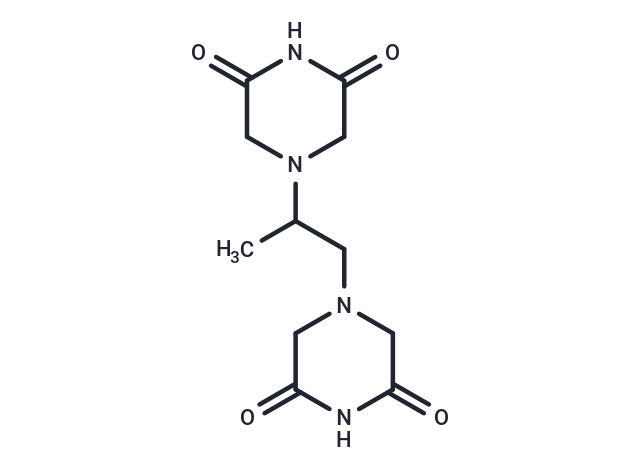Shopping Cart
- Remove All
 Your shopping cart is currently empty
Your shopping cart is currently empty

Razoxane is used as an antimitotic agent with immunosuppressive properties.

| Pack Size | Price | Availability | Quantity |
|---|---|---|---|
| 1 mg | $100 | In Stock | |
| 5 mg | $247 | In Stock | |
| 10 mg | $363 | In Stock | |
| 25 mg | $619 | In Stock | |
| 50 mg | $818 | In Stock | |
| 100 mg | $1,090 | In Stock | |
| 1 mL x 10 mM (in DMSO) | $226 | In Stock |
| Description | Razoxane is used as an antimitotic agent with immunosuppressive properties. |
| In vivo | This tumor model is characterized by osteoid formation and spontaneous metastasization to lungs, kidneys and lymph nodes. Razoxane given intraperitoneally (i.p.) from 2 days before to 14 days after tumor transplantation (30 mg/kg or 10 mg/kg per day) resulted in a dose-dependent prolongation of median survival time (83 or 48 days respectively, versus 38 days for the control group), but showed no influence on the growth of the primary tumor. Early treatment with razoxane (30 mg/kg i.p. from day -2 to +14) showed a greater inhibition of pulmonary metastases than later treatment (30 mg/kg i.p. from day +14 to +28 after transplantation). Whereas 59.9 per cent of the total sectional area of the lungs in the control animals was covered by osteosarcoma metastases, only 3.4 per cent and 26.1 per cent respectively was affected in the early and late razoxane treatment groups. Toxic side-effects of these treatment schedules were reversible diffuse alopecia, but no retardation of body weight gain[2]. |
| Molecular Weight | 268.27 |
| Formula | C11H16N4O4 |
| Cas No. | 21416-67-1 |
| Smiles | CC(CN1CC(=O)NC(=O)C1)N1CC(=O)NC(=O)C1 |
| Relative Density. | 1.2576 g/cm3 (Estimated) |
| Storage | Powder: -20°C for 3 years | In solvent: -80°C for 1 year | Shipping with blue ice. | |||||||||||||||||||||||||||||||||||
| Solubility Information | DMSO: 60 mg/ml (223.66 mM) | |||||||||||||||||||||||||||||||||||
Solution Preparation Table | ||||||||||||||||||||||||||||||||||||
DMSO
| ||||||||||||||||||||||||||||||||||||

Copyright © 2015-2024 TargetMol Chemicals Inc. All Rights Reserved.